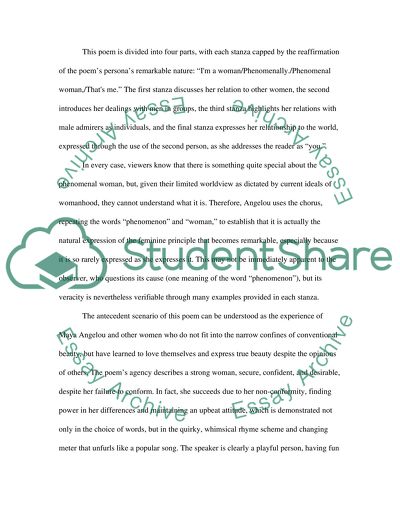Cite this document
(“The Phenomenon of Natural Beauty: Maya Angelous Phenomenal Woman Essay”, n.d.)
The Phenomenon of Natural Beauty: Maya Angelous Phenomenal Woman Essay. Retrieved from https://studentshare.org/literature/1540120-the-phenomenon-of-natural-beauty-maya-angelous-phenomenal-woman
The Phenomenon of Natural Beauty: Maya Angelous Phenomenal Woman Essay. Retrieved from https://studentshare.org/literature/1540120-the-phenomenon-of-natural-beauty-maya-angelous-phenomenal-woman
(The Phenomenon of Natural Beauty: Maya Angelous Phenomenal Woman Essay)
The Phenomenon of Natural Beauty: Maya Angelous Phenomenal Woman Essay. https://studentshare.org/literature/1540120-the-phenomenon-of-natural-beauty-maya-angelous-phenomenal-woman.
The Phenomenon of Natural Beauty: Maya Angelous Phenomenal Woman Essay. https://studentshare.org/literature/1540120-the-phenomenon-of-natural-beauty-maya-angelous-phenomenal-woman.
“The Phenomenon of Natural Beauty: Maya Angelous Phenomenal Woman Essay”, n.d. https://studentshare.org/literature/1540120-the-phenomenon-of-natural-beauty-maya-angelous-phenomenal-woman.


